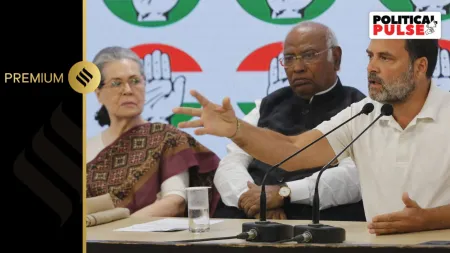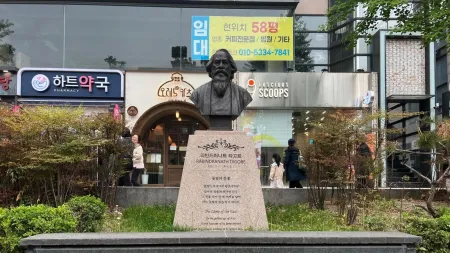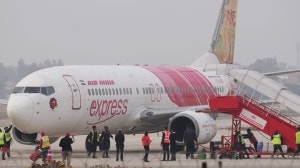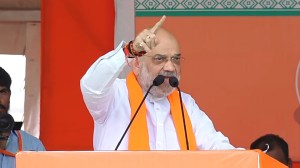- India
- International
Why China has assisted Sri Lanka over debt worth $4.2 billion
India is also involved in the process of negotiating the debt Sri Lanka owes to it. How did the country get here and why does this deal matter?
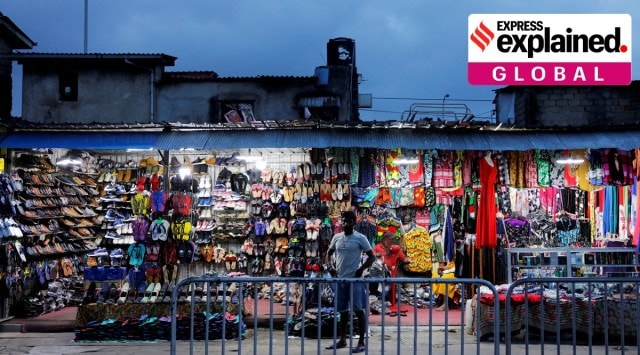 For India, China’s assistance to Sri Lanka will be seen as another means through which it is investing in deepening its ties with the island nation. (Photo via REUTERS/ Dinuka Liyanawatte/File Photo)
For India, China’s assistance to Sri Lanka will be seen as another means through which it is investing in deepening its ties with the island nation. (Photo via REUTERS/ Dinuka Liyanawatte/File Photo) More than a year after Sri Lanka plunged into an economic crisis, it has reached an agreement with the Export-Import (EXIM) Bank of China to cover about $4.2 billion of its outstanding debt, according to a statement from its finance ministry on October 11.
India is also involved in the process of negotiating the debt Sri Lanka owes to it, given the island nation’s economic woes. But China is the biggest bilateral creditor to Sri Lanka – having lent about $7 billion of the country’s total foreign debt of $42 billion (as of 2022). So what’s behind this deal?
First, why does Sri Lanka need assistance with its foreign debt?
In April 2022, Sri Lanka declared that it had failed to repay its debt of more than $83 billion, with more than half of it owed to foreign creditors. It also decided to approach the International Monetary Fund (IMF) that month.
The crisis was years in the making and many factors were responsible, such as President Gotabaya Rajapaksa’s government pushing through the largest tax cuts in Sri Lankan history as part of the 2019 elections campaign, impacting the government’s revenue sources. Another blow was dealt by the coronavirus pandemic, which hit the tourism industry.
The war in Ukraine further contributed to fuel shortages. Skyrocketing inflation saw many Sri Lankans take to the streets to protest against their government. By July that year, then-President Rajapaksa resigned.

How has Sri Lanka planned to tide over its economic crisis?
In the interim, Rajapaksa had sought help from China and India, particularly assistance on fuel from the latter. A diesel shipment under a $500 million credit line was signed with India. Later, a $1 billion credit line for importing essentials, including food and medicine was also extended.
In September 2022, Sri Lanka qualified for an IMF Extended Fund Facility of $2.9 billion. Its first tranche of $330 million came through in March 2023.
However, the IMF had said that this loan would be based on a “prior action” of securing financing assurances for debt sustainability from its creditors. Simply, this meant that some of the debt owed to other countries had to be managed through negotiations (called debt restructuring), for the IMF to financially assist Sri Lanka.
Generally, debt restructuring can lead to reduced loan interest rates or an extension of its repayment date. Sri Lanka, for instance, has asked foreign investors for a 30% ‘haircut’ (or reduction in the value of outstanding debt). According to a Reuters report, at the end of restructuring, it hopes to reduce its overall debt by $16.9 billion.
In the last week of September this year, a debt rework deal between Sri Lanka and countries including Japan, India and France was expected, but did not go through.
The First Review Mission of the IMF said that while Sri Lanka had made some progress in terms of monetary and fiscal policy, there were some roadblocks in terms of a possible shortfall in tax collections. “To increase revenues and signal better governance, it will be important to strengthen tax administration, remove tax exemptions and actively eliminate tax evasion,” it said.
What are the concerns over Sri Lanka’s debt negotiations?
In order to meet IMF conditions, Sri Lanka started negotiating with its bondholders and key bilateral creditors – including China, Japan and India – last September. But how these negotiations were to be done became a contentious matter.
Through the Paris Group, which includes countries like Japan and South Korea, there was an attempt from countries to bring China and India on board and negotiate as a whole – to make sure no nation gets preferential terms. Of the total bilateral debt Sri Lanka owes to foreign governments, China’s share is the greatest, followed by Japan and India.
But China has largely gone for bilateral negotiations in the past, with confidential terms. As The Indian Express reported earlier, India has had two major concerns about joining a common platform that does not have China: one is that it leaves China to enter into its own custom-made bilateral agreement; second, the Sri Lankan side has conveyed that this year’s emergency assistance from India amounting to $4 bn should be included in the restructuring, which is not how New Delhi sees it. It is now also engaged in separate bilateral talks with Colombo.
What are the implications of this deal?
The agreement with China’s EXIM Bank will assist Sri Lanka in getting past the first review of the IMF programme in the coming weeks and in securing the release of the second IMF tranche of about $334 million, the Sri Lankan Finance Ministry’s statement said. “The indicative terms agreed will provide the necessary fiscal space for Sri Lanka to implement its ambitious reform agenda,” it added.
Details of the deal are not out yet, but in March, Sri Lankan President Ranil Wickremesinghe told Parliament that the bank had sent the government a “new letter” of support. Previously, it had said it was ready to observe a two-year moratorium on Sri Lankan debt.
For India, China’s assistance to Sri Lanka will be seen as another means through which it is investing in deepening its ties with the island nation. In recent years, Sri Lanka also joined the Chinese infrastructure financing project, the Belt and Road Initiative (BRI), which India opposes.
As part of it, China funded the development of Hambantota port in southern Sri Lanka, which falls on the crucial trade routes between Southeast Asia, Africa and West Asia. It was taken over in 2017 after Sri Lanka failed to pay for its costs. This has been termed ‘debt-trap diplomacy’ by many, as a means for China to assert itself and acquire overseas assets through its increased economic heft.
India has concerns that China’s increasing presence in its immediate neighbourhood could further embolden Chinese military presence, also potentially allowing them to conduct surveillance in the region.
More Explained
Must Read
EXPRESS OPINION
May 09: Latest News
- 01
- 02
- 03
- 04
- 05


